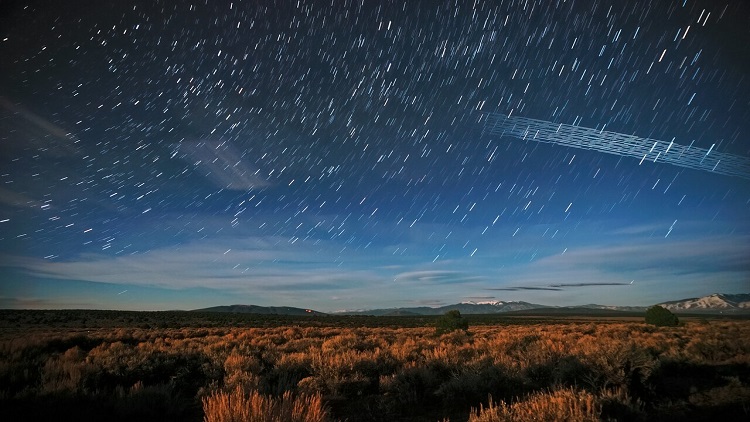S. Himmelstein | June 17, 2022
 Starlink satellites over Carson National Forest, New Mexico, photographed soon after launch. Source: M. Lewinsky/National Science Foundation NOIRLab
Starlink satellites over Carson National Forest, New Mexico, photographed soon after launch. Source: M. Lewinsky/National Science Foundation NOIRLab
The environmental protections accorded terrestrial ecosystems must also be applied to the orbital space around the Earth. Space is an important environment to preserve on behalf of professional astronomers, amateur stargazers and Indigenous peoples, according to an international group of researchers.
An influx of space debris in orbital space, classified as 100 km above the Earth’s surface, caused by the rapid growth of satellite mega-constellations is endangering this ecosystem. The installation of these huge clusters of hardware, some with up to tens of thousands of satellites delivering broadband to Earth, are congesting space. Rocket launches pollute the atmosphere and pieces of broken satellites traveling at high speeds through orbital space threaten working satellites in their path.
In addition, streaks from satellite flares cause light pollution and are increasingly disrupting research. The Vera C. Rubin Observatory in Chile, which plans to conduct a 10-year Legacy Survey of Space and Time, will be badly affected by these conditions.
The removal of such debris is key to sustainability in space and to reducing the risk of obsolete spacecraft colliding with new and existing satellites. Technologies to preserve astronomical assets are under development, including a solution based on quantum-inspired computing and artificial intelligence to address the efficient removal of space debris. This project aims to improve mission planning so that a single spacecraft can efficiently select which pieces of space debris to remove in one mission, and at a faster rate than is currently possible.
Private orbital debris removal company Astroscale has validated its magnetic capture system designed to tackle the problem of space debris. Its End-of-Life Services by Astroscale-demonstration (ELSA-d) servicer satellite, in orbit since March 2021, has successfully captured a simulated piece of space junk in orbit.
A Chinese military satellite designed to mitigate space debris was recently deployed from the Xichang Satellite Launch Center in southwest China. And a cosmic cleanup system is also under development by Airbus in the form of a space harpoon. At roughly 3 ft long, the high-tech harpoon will be tethered to a larger spacecraft capable of locating space junk, at which point the harpoon will be hurled at the items at approximately 82 ft per second.
While laudatory, these projects do not address the environmental impacts of all aspects of satellite constellations — including their launch, operation and de-orbit. The international research team advocating for space environmentalism, which includes participants from the European Space Agency (Netherlands), Center for Astrophysics — Harvard and Smithsonian, Smith College (Massachusetts), University of Regina (Canada), University of Manchester (U.K.), SKA Observatory (U.K.), University of British Columbia (Canada), University of Texas at Austin, University of Washington and University of Edinburgh (U.K.), urges policy makers to work collaboratively to create a shared, ethical and sustainable approach to space.
[Learn more about satellite technologies and manufacturers on GlobalSpec.com]
Their assertions and policy recommendations are published in Nature and inform an amicus brief arguing that U.S. environmental regulations should apply to the licensing of space launches. The case, which could set a precedent in the growing campaign for space environmentalism, is currently before the U.S. Court of Appeals for the District of Columbia Circuit.
